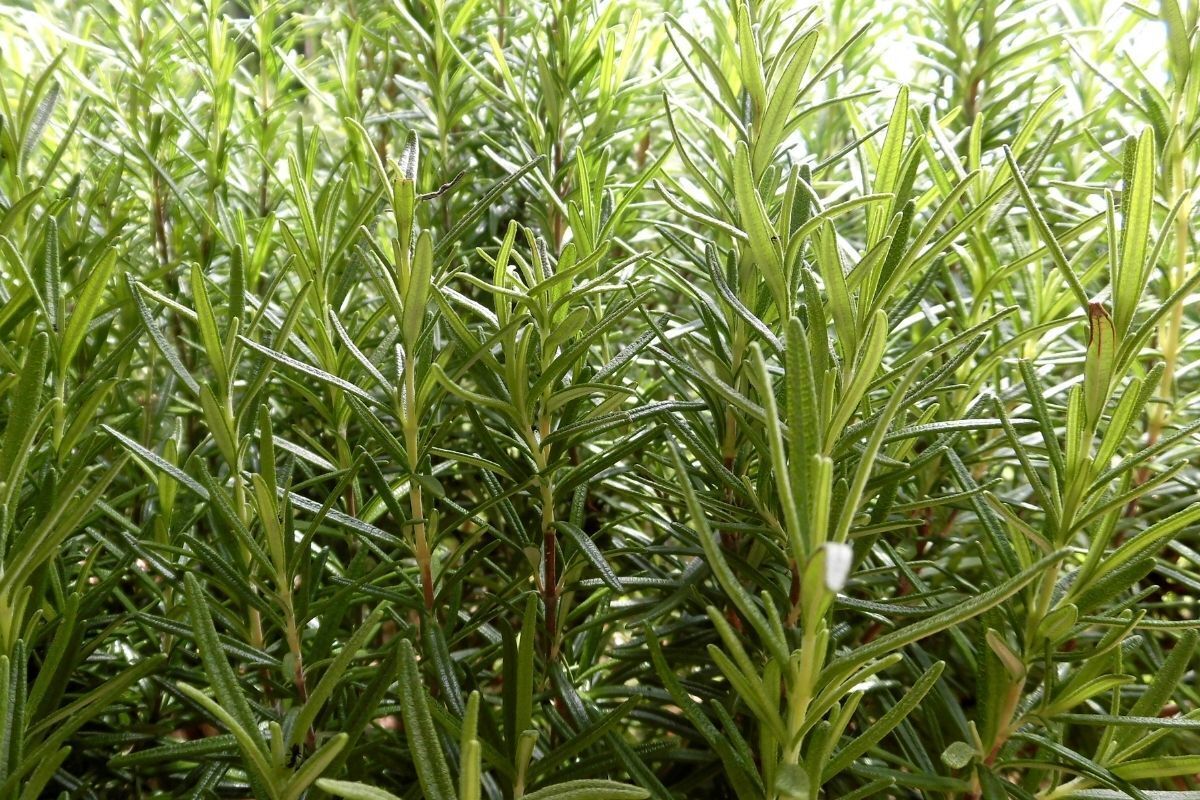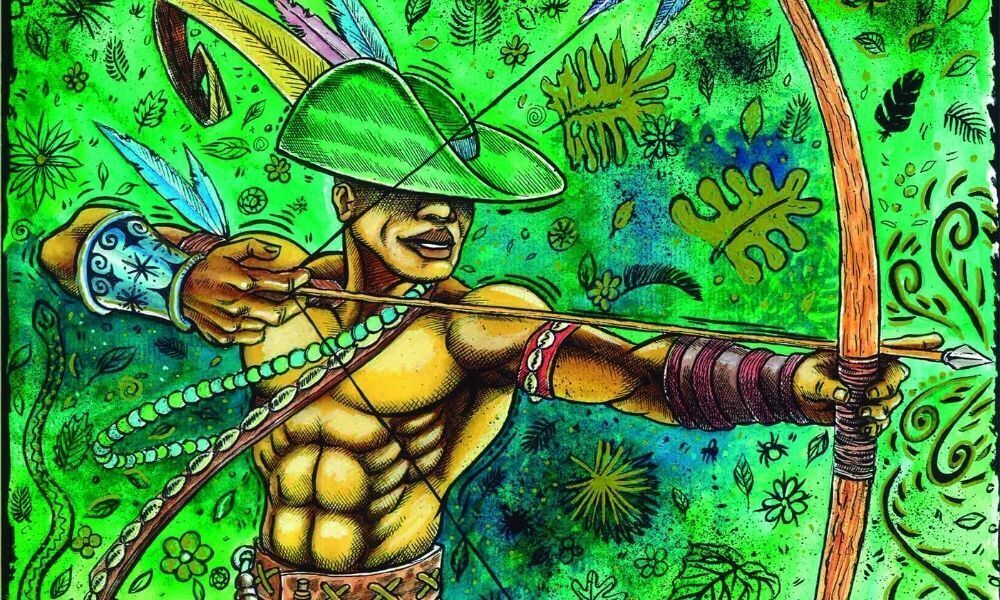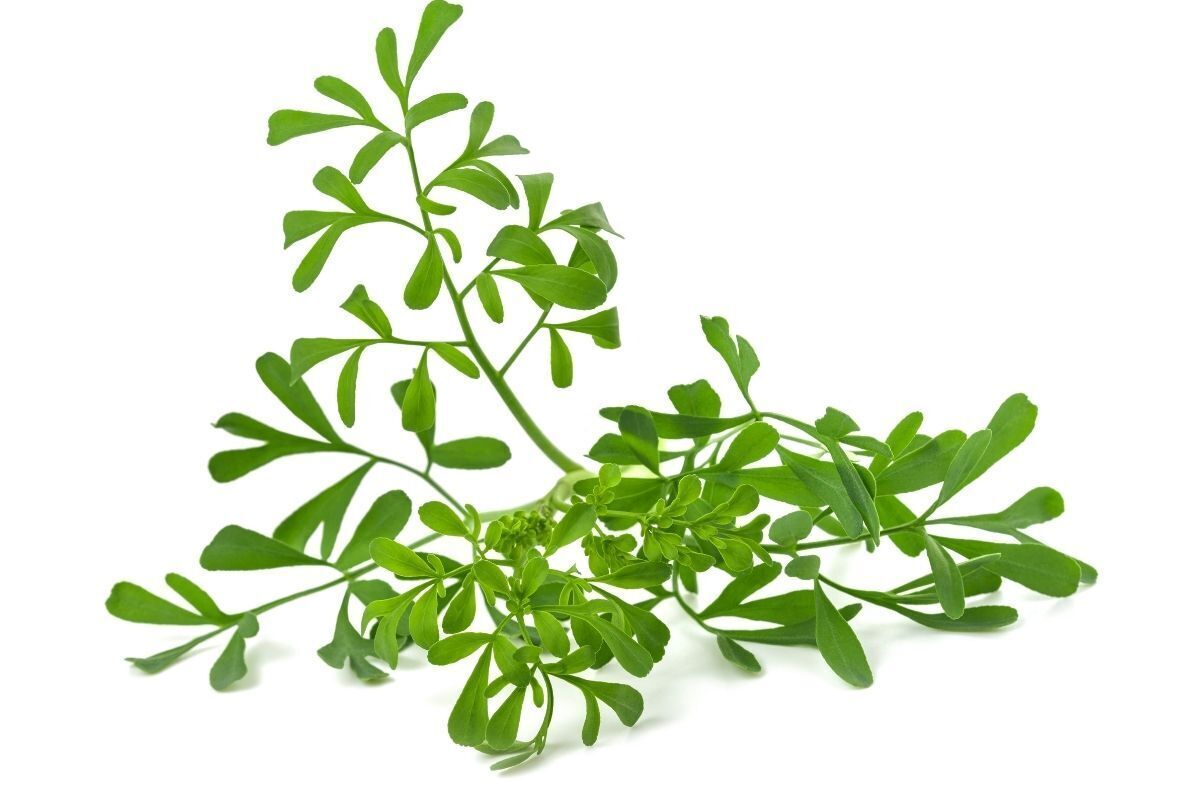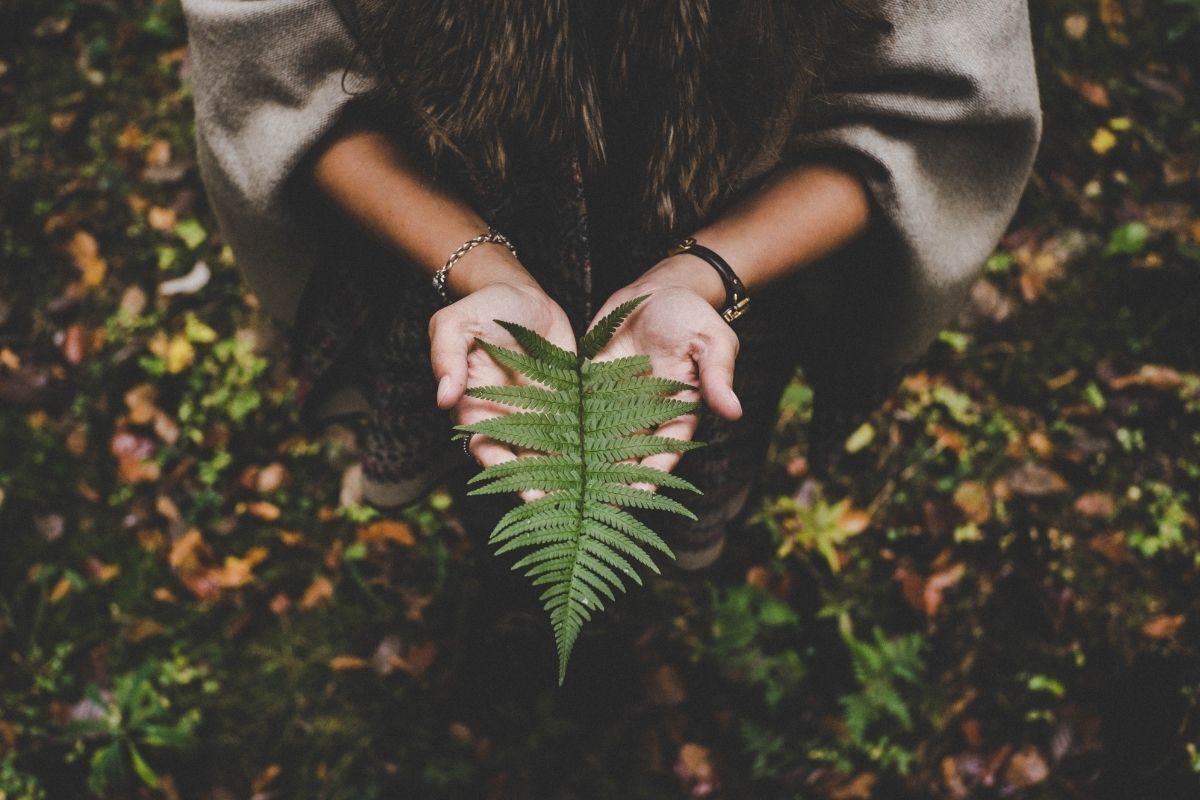Table of contents
Know the leaves and herbs of Oxóssi!

Oxóssi is an orixá known for being the protector and guardian of flora and fauna. His powers come from the sacred leaves and herbs and his knowledge is directly linked to nature. Oxóssi is also known as a hunter and his main tools are the bow and arrow.
In rituals, leaves and herbs are widely used, either in baths or in smoking. They are also responsible for warding off negative energies, purifying body and spirit and bringing protection.
The leaves and herbs of Oxóssi are used mainly for unloading, healing and balance. In this article, you will learn all about this orixá, its sacred herbs and leaves and how to use them for your benefit. Continue reading!
Understanding more about the leaves and herbs of Oxóssi

In Umbanda, for example, the use of herbs and leaves of the Orixás is a practice that dates back to the beginning of time. Therefore, it is important to know who is the saint and what to do in an hour of need. Below, all the details of how to use the herbs and leaves of Oxóssi for your benefit. Check it out!
Origin and history of Oxóssi
Revered from north to south of Brazil, Oxóssi is the Lord of the Woods. In Umbanda, the Orixá is the son of Oxalá and Iemanjá.
Anyway, in all variations of the religions of African matrix, Oxóssi is revered and recognized for his magical powers. By the way, it is worth remembering that Oxóssi, in Yoruba, is derived from Osowusi, which means "the night and popular guardian", "hunter or popular guardian".
Oxóssi Syncretism
Everyone knows that religious syncretism is the mixture of two or more beliefs, which end up becoming a doctrine. An example of this was the colonization of Brazil, when Catholicism was "mixed" with some indigenous beliefs.
In Umbanda, a typically Brazilian religion, Oxóssi is Saint Sebastian, protector of humanity against wars, hunger and disease. His day is January 20.
However, also due to syncretism, in Pernambuco, Oxóssi is the Archangel Miguel. In Bahia, he is Saint George. Especially in Salvador, on Corpus Christi day, the Oxóssi Mass is held annually, with the participation of the ialorixás of Casa Branca do Engenho Velho.
What is the importance of leaves and herbs for the Orixás?
The Afro-Brazilian religions are based on the use of the four elements: water, earth, fire and air. However, the potentiation of these elements in the rituals of Umbanda, for example, is done through the leaves and herbs of each Orixá.
The explanation is that in Umbanda, the juice of the stems, flowers, fruits and leaves is considered the sacred green "blood". The green blood, for umbandistas, is the element of connection with the astral, conductor of the vibration of the orixá, in the consecration of the head, objects, guides and settlements.
What are the most used herbs in Umbanda?
Whether for protection baths, unloading and attraction or to smoke the environment before and during rituals, the most used herbs in Umbanda are lavender, rosemary, guinea and rue. This menu also includes benzoin, star anise, levante and caboclo vine.
In fact, more than 100 different qualities of herbs and leaves are part of the rituals in Afro-Brazilian religions. But the choice of the right herbs and leaves will depend on the objective of the work or the entity that is in the world.
For example, in a session of preto velho, it is very common to use arruda, basil, guinea and the sword of St. George, which discharge, cleanse the environment and bring protection.
How are herbs classified?
According to the fundamentals of Umbanda, herbs can be classified as cold (of specific use and bring energy to a certain magnetic field); warm (that act in the balance of energies, regenerating our astral field and our aura) and hot (that have a high energetic power of cleaning and unloading).
The cold herbs are also divided into energetic, calming and attracting and have no contraindication. The warm or balancing herbs, like the cold ones, can be used without contraindications and soften the impacts of the hot herbs, which are the most aggressive and need to be used with care.
How to please the Orixá Oxóssi?
Oxóssi prefers his offerings to be delivered in woods or forests. But never put your gifts to this Orixá in a vacant lot. You can offer Oxóssi your adimu (food) and green or white candles.
To make the adimu you will need a medium bowl, 7 ears of corn, dendê oil, coconut fat, smoked fish powder and sugar cane syrup.
Roast the seven clean ears of corn on a brazier and sprinkle them, while still hot, one by one with dende oil, coconut fat, sugar cane syrup and smoked fish powder. Arrange the ears of corn with the thinner ends facing upwards in the bowl already lined with the corn straw. Sprinkle everything with sweet (white) wine. While preparing the adimu, recite the following:
Lord of the woods and wildlife, at this moment, Father, I am your arrow.
I am the strength of your bow, I am all that you are, the agility, the wisdom.
Make me, sovereign hunter, a successful person, and let there be plenty in my house.
Give me wisdom to act, peace to build my ideals, strength to follow always.
Oxóssi, king of the forests, of the moon, of the blue sky, may I be light as the bird that flies, free as the horse that runs, strong as the oak in the forest, straight as his arrow.
And may I always win and be happy!!!
Okê Arô, Oxóssi!!!"
Main leaves and herbs of Oxóssi

As the protector of the woods and forests, Oxóssi has a very close relationship with the Orixá Ossain, who holds the secret of the sacred leaves and herbs.
And each leaf, each herb, each mixture has a determined objective. In the sequence, everything about the main leaves and herbs of Oxóssi and their uses. Continue reading!
Acacia
Acacia is the popular name for a group of flowering shrubs characteristic of northeastern Brazil. In Umbanda, the acacia used is Acácia-Jurema, a plant with psychoactive properties.
Also known as jurema preta, the herb serves, in the ritual of Oxóssi, for baths of protection against nightmares and sleep protection. In the classification as jurema-white, it can be used in teas, incense and sacred smokes.
Rosemary
Oxóssi, regent of farming and agriculture, has in rosemary one of his greatest sources of power. This is because this herb has properties not only of cleaning and protection, but also attracts good luck, prosperity and inner peace.
In the Oxóssi line, rosemary is used to compose the mixture of herbs that are used to smoke and clean environments, especially before any ritual. As a matter of fact, in Umbanda, one does not start a ritual without a good smoking.
Alfavaca
This herb has also been widely used in Umbanda rituals, mainly in the "descargo" baths and in the "abôs" of the children of Oxóssi.
Alfavaca is indicated for opening paths and attracting good energies. If used dried in smoking, it helps to eliminate spiritual larvae and keeps bad spirits away. In the Oxóssi line, alfavaca occupies a prominent place, since the use of this herb in baths, for example, brings the Orixá's children closer to the powers of nature.
Rue
Known as the "sponge" of the universe, rue is widely used in the removal and chasing away of negative energies. Considered a warm herb, its powerful spiritual properties are able to scare away bad thoughts.
In rituals dedicated to Oxóssi, rue is generally used fresh and in branches, which serve as instruments in blessings and passes. But remember: if the ritual is dedicated to Oxóssi, the rue must be female.
Hair of the Corn
The corn-hair or cornbeard can be used in baths of protection and prosperity in Oxóssi rituals. This is because the corn-hair contains, among others, properties of attraction of wealth and abundance.
This herb is also used in works for abundance offered to the Orixá. In the case of offerings, the hair of corn should be used in natura.
Caiçara
Originally from the backlands of the Northeast, the caiçara is included among the leaves and herbs of Oxóssi. Although it is a common plant in the region, the handling of the herb in Umbanda needs to be careful.
This is because the caiçara bath is widely used to improve sexual performance, ward off envy and protect against negative fluids. The herb can also be offered as an ingredient in the adimu of the Orixá.
Capeba
In the Kingdom of Oxóssi we will also find the capeba or pariparoba. This herb gathers powers of purification of the aura, cleaning of the energetic field and clarity of the mind. In the rituals of Oxóssi, capeba is the herb used in the initiation of mediums.
It can also be included in offerings to the Orixá. In this case, the herb serves as lining for the bowl, where the adimu will be placed. The juice of the macerated capeba is used, in Umbanda, to prepare the images for the obligation.
Lemongrass
Lemongrass is indicated as a spiritual tranquilizer in the line of Oxóssi. Due to its mystical relaxing properties, the herb is employed in baths, incense, smokers and even in teas.
The fresh branches of lemongrass, one of the favorites of Oxóssi, can also be used to "cross" the environments. In this way, the herb acts in the balance of energies, while expelling negativity. It is worth remembering that the fresh branches of lemongrass must be harvested before nightfall.
Carapiá
Carapiá or contra-erva is native to the Atlantic Forest, Caatinga and Cerrado regions. Despite being threatened with extinction, the root continues to be widely used by the people of the forests, caboclos, indigenous, backwoods and quilombolas.
In Umbanda, carapiá is used in baths, smokings and in the preparation of rituals in the vibration of Oxóssi. Among shamanism lovers, the root is used as a mind purifier.
In baths, it acts as a relaxant and in cleansing the aura. As it is a warm herb, it should be balanced with a cold herb depending on the need of the situation. However, it should not be used by pregnant women as it has abortifacient properties.
Cipó-caboclo vine
For those who need to find a purpose in life, need firmness to decide and want to find the right direction safely, there is nothing better than a bath in cipó-caboclo, especially if taken after 6pm on a Thursday, the day of Oxóssi.
Caboclo vine is classified as a warm herb and, if appropriate, can be "balanced" as one or more cold herbs. Warm herbs are generally used for a particular purpose, so be objective.
Birdsfoot trefoil
According to Candomblé rites, the bird weed is the twelfth herb that completes the annual act of renewing the obligations to the orixás. It is often applied in abôs and obligations of babalorixás and yalorixás, especially those children of Oxóssi.
It is worth remembering that this ancient herb is present everywhere on the planet, it is associated with some cultures, especially in Europe. The plant is still used today in Christmas festivities.
Eucalyptus
A warm and powerful herb, eucalyptus is used in Umbanda for cleansing and astral disinfection. In rituals, it is customary to line the healing bed with leaves of this plant. It is also common to use eucalyptus in energetic passes. Eucalyptus is one of the main herbs of Oxóssi because of its magical powers.
The plant, used in smokings, baths and maceration of herbs obligations, can act positively in the energy and magnetic fields denser, or older problems such as spells that may have activated negative portals. Eucalyptus is even able to close these portals.
Guava tree
The leaves and bark of the guava tree have long been used by indigenous Brazilians to cure and prevent diseases. Considered a warm herb in Umbanda, the guava tree is present in virtually all rituals, especially those offered to Oxóssi.
In the culture of Afro-Brazilian religions, the leaves and bark of the guava tree are used in baths, shaking, leaf washing, washing of beads and guides, offerings, ebós and head obligations.
Guaco
Considered a cooling and soothing herb, guaco is widely used to treat spiritual bodies and their nervous system. It is also used to tranquilize the spirit and enable the maturation and removal of perceptions of the mind that have not been fully assimilated, which can bring disturbances.
The guaco is an important ingredient in the baths of descargo, smokings and also in the maceration of herbs. In the line of Oxóssi, it is indicated by the entities for the treatment of respiratory problems and can be ingested as tea or syrup. It can also be used in poultices and infusions.
Guinea
Guinea is one of the most powerful plants when it comes to eliminating negativity. It is widely used in energetic baths, amacis, defumations, crossing of guides and images, besides being widely inserted in the maceration of herbs for Oxóssi rituals.
Hot and aggressive, the herb has the power to annul; cut; dissolve; eliminate; cleanse and break negative energetic accumulations that involve dense energetic layers. It also has the power to transmute energies and is considered the nucleus of vigorous energetic forces. Guinea also helps to break thoughts with low vibration and aids in communication with good spirits.
Guinea pig
Although widely used in Umbanda rituals, the guiné-caboclo or amansa-senior must be handled with care. Because it is a hot and aggressive plant, if used for a prolonged time in baths or tea, it can cause intoxication.
The herb of banishment, as it is also known, has the power to deeply clean the energy field, expelling obsessors. It is advisable to "break" some of the effects of this herb by adding other warm or cold herb leaves.
Jurema
Like the guiné and the guiné-caboclo, the jurema is a hot and aggressive plant. In the energetic baths and of discharge, it is essential, due to its mystical properties of eliminating negative energetic accumulations.
In addition, this herb is great to ward off evil entities and strengthen the masters. Its flower, bark and leaves are essential ingredients in purification rituals. Oxóssi uses this plant to activate his healing powers, especially for sexually transmitted diseases.
Jureminha
Also known as alfazema-de-caboclo, jureminha is an herb used in purification and cleansing baths. In the Umbanda rituals dedicated to Oxóssi, it is fundamental in the preparation and washing of guides, images and all other objects necessary for initiation.
The herb is also used for head rituals, amacis, and personal or environmental smoking. It is also included in abôs, which in Yoruba means herbal bath for purification and cleansing. In Candomblé, jureminha is considered a gift, for without it no ritual can begin.
Blond
Louro or guacaraiba is the herb of prosperity. It is a natural catalyst of material energy, the desire for progress and growth. In Umbanda, bay is widely used in rituals to attract material goods.
Considered a cold and specifically masculine herb, laurel can be used in baths, incense, smokings, teas, infusions, powder or oil. Its powers focus on the development and strengthening of mediumship, as well as cleansing and unloading.
Field mallow
The malva-do-campo is a characteristic plant for the almost celestial smell emanated by its flowers and leaves. For this reason, this herb is often used in Oxóssi rituals as an instrument to raise the vibration of the mediums by smell, channeling energies of affection, softness and freshness.
For its harmonizing properties, mallow is considered a feminine herb, which stimulates spirituality and emotional balance. It can be used in smokings and baths, besides amacis and in the preparation of ritual items.
Rose mallow
Rose mallow has been used by various civilizations for its spiritual "anti-inflammatory" properties. Whether in amacis for head and bead washing or in baths, this herb has the power to balance and harmonize the energy field, bringing tranquility to the spirit.
For Oxóssi, the rose mallow is a source of energy that helps channel the energies of ancestral balance, by promoting peace and welcome. Therefore, in the Oxóssi line, it is used to treat suffering spirits.
Basil
Both basil and purple basil are quite famous among the adepts of the religions of African matrix. Especially for those terreiros, barracões led by children of Oxóssi.
Basil is a warm and balancing herb, widely used in teas indicated by entities for the treatment of diseases of the digestive system. The herb is also used in cleansing, unloading and relaxation baths. Its properties facilitate access to the astral world and increase positive vibration.
Peregum
In Candomblé, the peregum is considered as the ancestral herb, the oldest herb used in rituals to the orixás and means to call (invoke) spirits. The peregum is a fundamental ingredient in rituals for protection against astral opponents and spiritual harmonization.
The plant can be cultivated around the house of Oxóssi to bring protection. In other rituals, peregum leaves are used in leaf-punching, smoking and weddings. peregum is also used to magnetize objects and tools of the orixá.
Elderberry
Since the beginning of time, the elderberry has been recognized as a plant linked to the sacred feminine. Legend has it that in each tree of the plant lived a healer who had been burned as a witch. In Umbanda, the plant is directly related to Oxóssi.
Its mystical properties are for cleaning environments and auras. The elderberry is an energetic herb for the body and soul and strengthens positive energies. The flowers and leaves are widely used in amacis and its fruits are ingredients in offerings to Oxóssi.
Willow
The willow tree has been used over the centuries in rituals of magic and sorcery for healing the ills of the body and the spirit. Legend has it that witches used to live by the willow tree because the plant had the properties of immortality and longevity.
Willow is not commonly used in Candomblé, but in Umbanda it is widely used in baths, teas, amulets and various works. This herb of Oxóssi, if mixed with other herbs, such as capim caboclo, is excellent in baths for prosperity.
Fern
Connected directly to Oxóssi, the fern is one of the most important ingredients in blessing and passing rituals. The fern is also widely used in initiation and mediumship development rituals.
As a smoker, the fern has the power of banishment and expulsion of obsessive spirits, purifies environments and attracts prosperity. It is a herb that expands the mediumship and expands the energy field and intuition, increases concentration, favoring the energetic understanding of the environment.
São-Gonçalinho
São-Gonçalinho is a hot herb, indicated to attract people or material goods, bring luck and cleanse the envy. In Candomblé parties it is common to see the leaves of the plant scattered on the floor of the terreiro, as well as under the straw bed of the son of saint in obligation to repel negativity.
In Umbanda, it is part of the initiation rituals, purifying baths, sacralization of the objects of the orixás and shaking. The herb is also used as "clothing" for the orixá Oxóssi. But beware, the herb of São-Gonçalinho can NOT be burned because it attracts bad luck.
Taioba
The taioba is one of the few herbs of orixás that is not used in head baths. However, it is one of the most important ingredients in the sacred foods of the saints and widely used in ebós (offerings).
The bath of taioba, in turn, is considered one of the most powerful for the discharge and the search for protection. The seat bath with taioba is usually indicated by the entities to treat infections in the urinary and reproductive systems.
How to use the plants of Oxóssi?

Throughout this article, we present 28 different herbs used in the vibration of Oxóssi. We also talk about the uses and indications of each one of them. As we have seen, the plants of Oxóssi, whether they are used in baths of unloading and protection, or for initiation and mediumistic development, are essential in various rituals.
In incenses and smokings, Oxóssi plants are very powerful against negative energies, spiritual larvae, obsessive spirits and banishment. Many of them can be used for spiritual, mental and physical healing.
So when you make your offering to Oxóssi to thank him for your request, or a tribute to the orixá so that he fulfills your desire, do not forget to say this prayer.
Oxóssi My Father, hunter of the spiritual plane, protector in strength and in faith, I raise my thought to You, to ask for Your protection for my house. With Your bow and Your accurate arrow, defend me from offenses, from disgraces, from misery, from hunger and from plagues. Protect me My Father Oxóssi, all the days of my life!"

